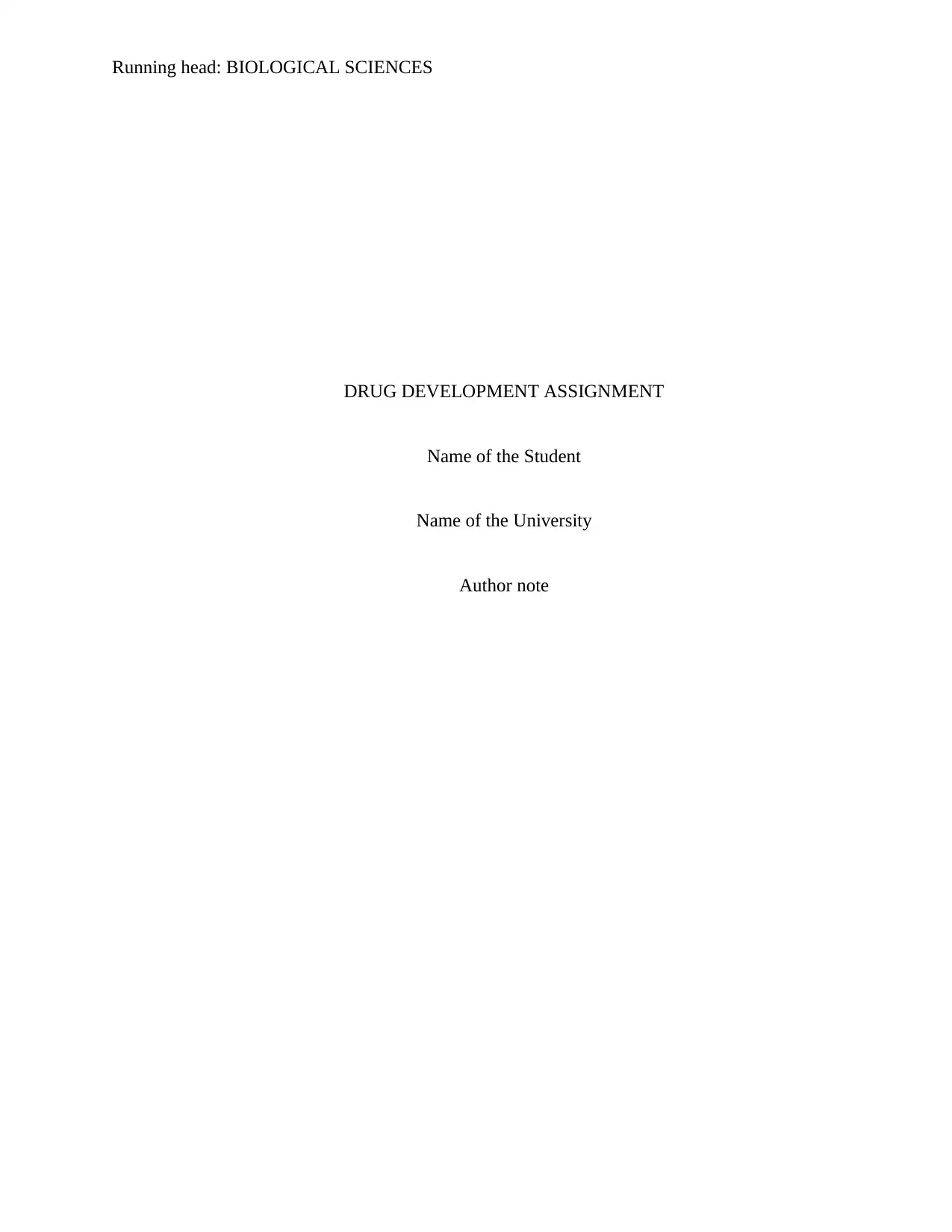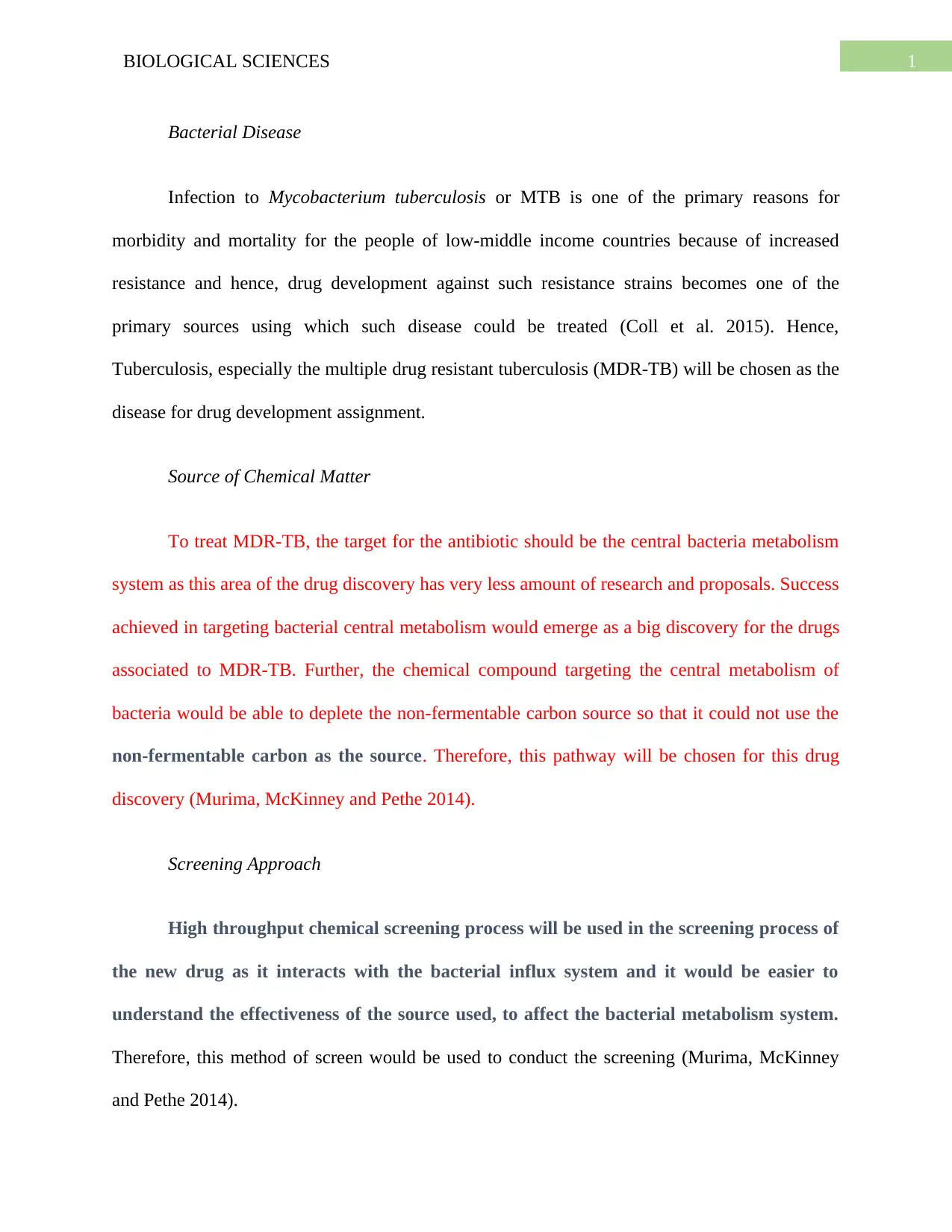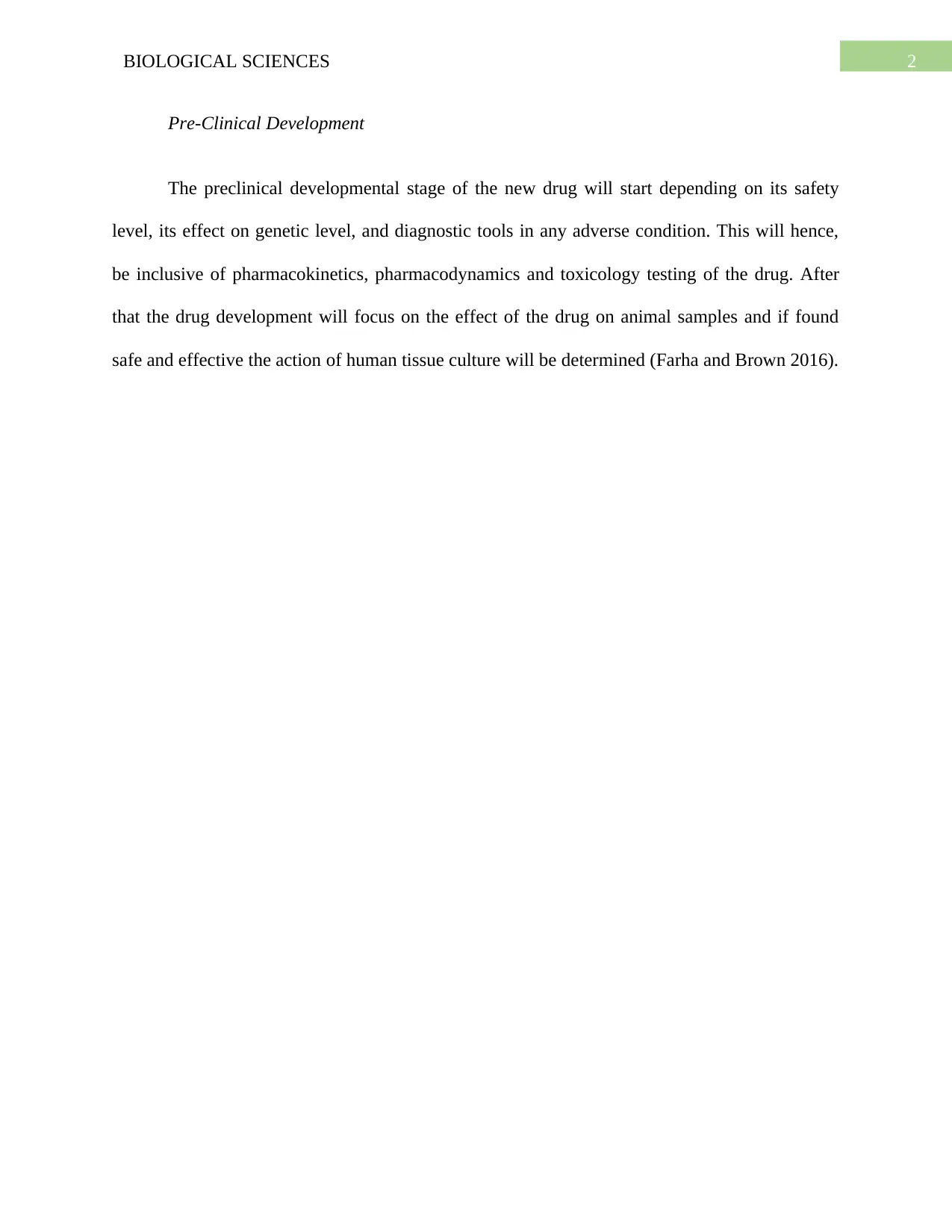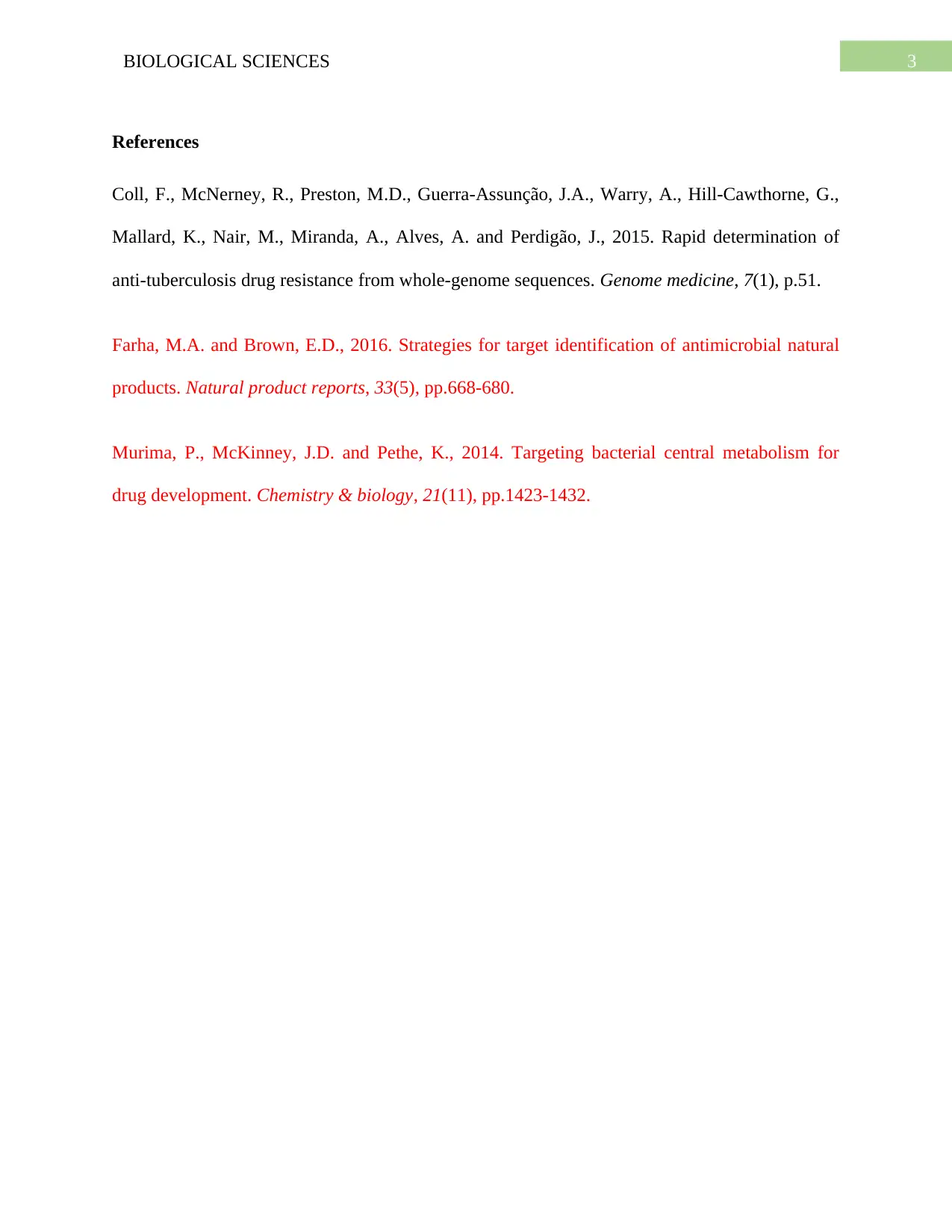Pharmaceutical Strategy: Novel Antibacterial Drug Development Plan
VerifiedAdded on 2023/04/22
|4
|507
|216
Report
AI Summary
This report outlines a strategy for a pharmaceutical company to develop a novel antibacterial drug, focusing on Mycobacterium tuberculosis (MTB) and multiple drug resistant tuberculosis (MDR-TB). It proposes targeting the central bacteria metabolism system, using high throughput chemical screening, and a preclinical development phase that includes pharmacokinetics, pharmacodynamics, and toxicology testing. The strategy aims to address the high costs, lengthy timelines, and scientific challenges associated with antibacterial drug development, providing a viable path for resource allocation and successful drug discovery.
1 out of 4





![[object Object]](/_next/static/media/star-bottom.7253800d.svg)